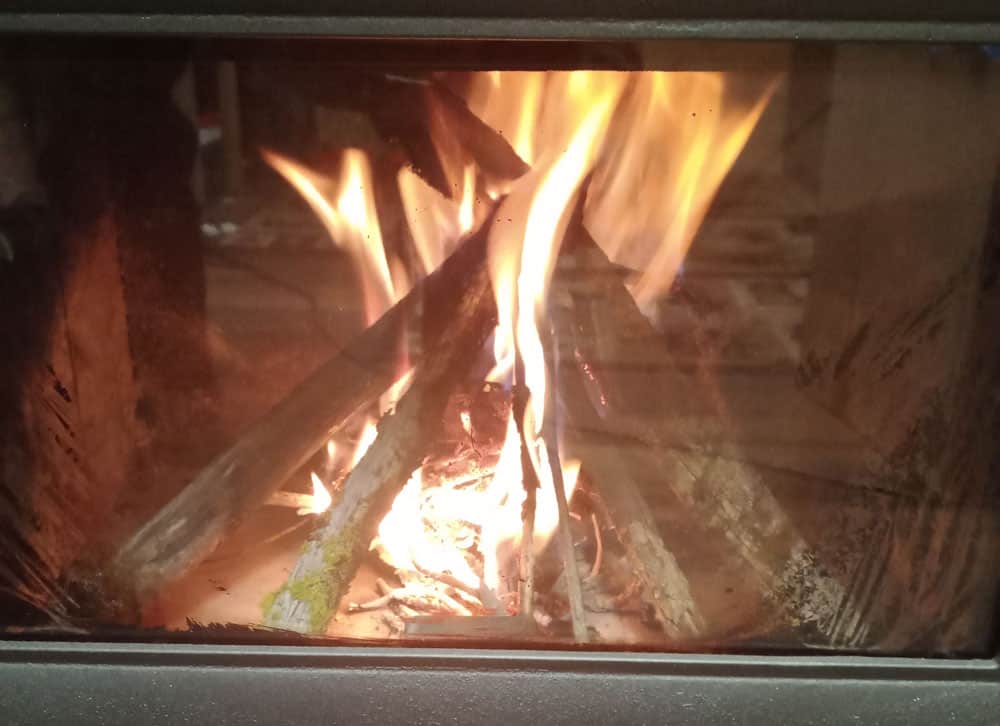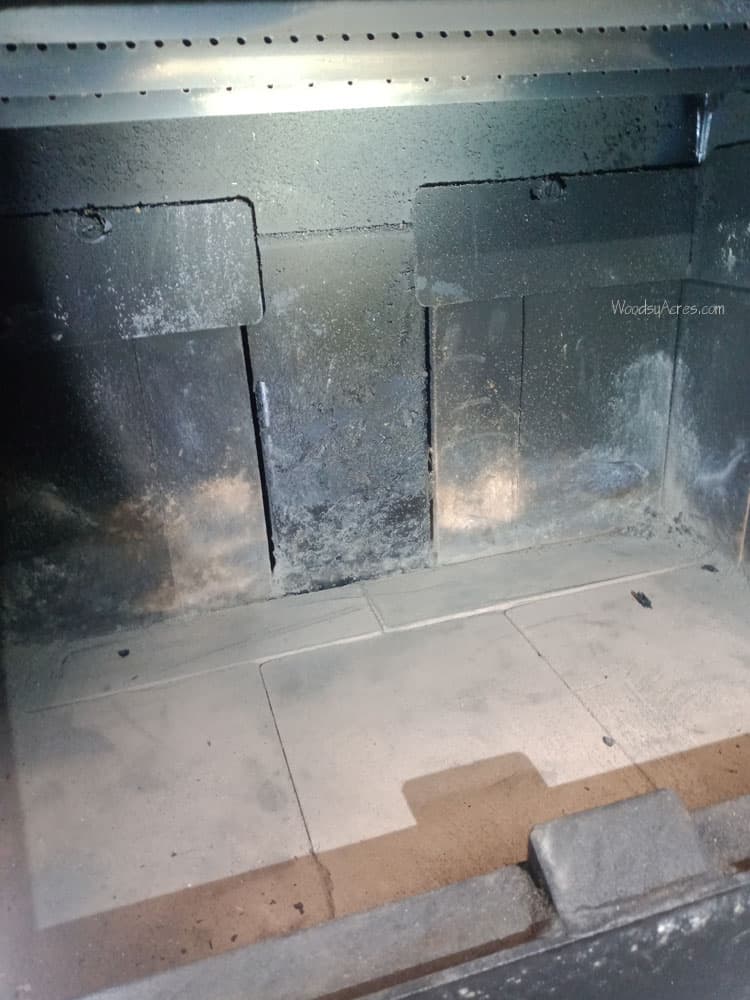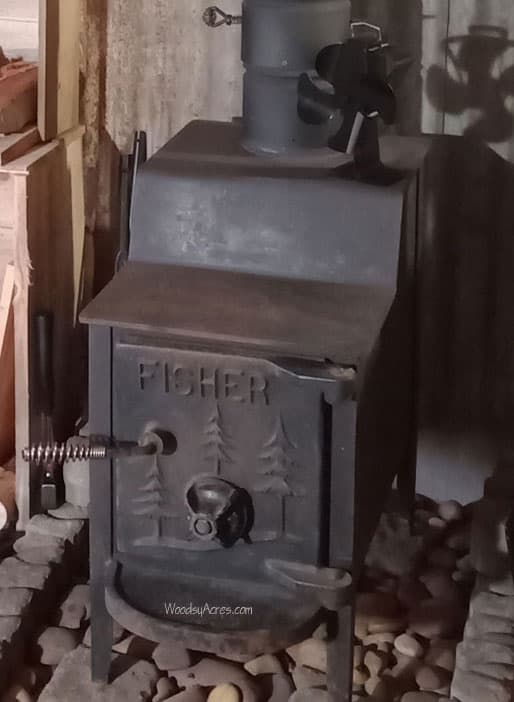
It has been said that fire brick isn’t needed inside a wood-burning stove’s fire chamber. However, there are good reasons to use fire bricks due to some specific attributes caused by burning wood.
I’ve owned and used early wood-burning stoves that did not have fire bricks. Instead, they might have a grate on the bottom of the stove where the fuel could burn. Other stoves had nothing but the metal or the stove’s cast iron where the fire would sit. They used a lot of wood, and we were either cooking hot or cold, which means they were not very efficient. With some in-depth research, here’s what I discovered.
As a general rule, you should use an insulation fire brick in a wood stove to help protect the bottom and walls of the stove. Insulation fire brick aids in keeping the heat within the burn chamber, which in turn increases the efficiency of the stove. There are other types of fire brick to choose from, but it’s recommended to check with the stove manufacturer for the proper kind and sizes needed.
Many of the fire bricks on the market are for other fire burning devices such as kilns, ovens, or blast furnaces and not necessarily for wood stoves,
Today, Wood stove manufacturers need to have their stoves certified by EPA to sell them for in-home use. In addition, many residential building codes require EPA-certified wood stoves for new or replacement installations. In other states, if you own a non-certified wood-burning stove, you are required by law to remove, destroy, and dispose of it before you can sell your home.
What is an Insulation Fire Brick?
There are two types of fire bricks with several different grades.
- The Insulation Fire Brick referred to as IFB, is considered a “soft brick.” and is the most common brick found in modern wood stoves. Based on IFBs design to reflect the heat into the burning chamber, forcing the stove’s heat to radiate from the front and top of the stove. While at the same time, IFB helps to insulate and protect the walls and floor of the wood stove. This type of fire brick has a pumice-like feel and doesn’t hold up well with use over time but is easier to cut.
- Refractory bricks are known as “hard bricks” and are more for structural use. The hard brick is more durable under corrosive and abrasive conditions. However, these bricks do not have as many insulation properties, holding heat more than an IFB. Hard bricks are also tough to cut, so you’ll find them in various pre-formed shapes.
- Brick manufacturers can have their own custom grades of bricks. However, the easiest way to understand brick grades is through these categories, light, medium, high, and super duty.

Do Fire Bricks Hold Heat for Very Long?
Depending on the fire brick used will determine whether it will hold heat for an extended amount of time.
The thermal conductivity of insulated fire brick (IFB) is lower than that of a standard refractory brick. Low thermal conductivity means that the material doesn’t easily allow the passing of heat; therefore, it does not retain heat but instead reflects it.
Other refractory fire bricks use materials that have a higher thermal conductivity. These bricks act more like a heat sink that absorbs and then radiates the heat. As a result, they can resist a much hotter environment. You can find this type of brick in anything from a smaller pizza oven to a more oversized industrial furnace or kiln for firing ceramic.
TIP: Any wood-burning device that does not have a glass in the door is most likely built before 1990.
From the EPA website
Can I Still use any old Wood Burning Stove?
With older wood stoves, fire bricks were more of a manufacturer feature to promote how their stoves were different. They would tout how their stoves would last longer because they protected the integrity of their stoves using fire bricks and radiated heat longer. Even though the fire bricks used may not have had the insulative values that could maximize the integrity of the stove’s floor or walls. Many today still think that’s the primary purpose of using fire bricks. Although that is one of the reasons, there are other considerations for using fire bricks.

If you own a wood-burning stove that is not sealed or does not use any fire brick, do not install it for in-home heat. These wood stoves are better used in a shop, barn, outdoors, other utility, or nominal use type structure. However, check with your local ordinances before installing any stove to ensure it’s all good. With older wood-burning stoves, you’ll want to meet all the clarences required to prevent a possible fire, just as some quick reference clearances estimated. But, again, these estimated distances depend on your location and local governing codes and ordinances.
| DESCRIPTION OF AREA | EST. DISTANCE |
| Distance from the back of the stove and a combustible wall. | 18 inches |
| The distance from the front of the stove to a combustible floor covering. Use sheet metal or concrete mason-type board for the stove to sit on. | 18 inches |
| The minimum distance from the top surface of the stove to the ceiling. | 48 inches |
| The minimum distance from the side walls to any combustible material. | 12 inches |
What are the Fire Brick Ingredients?
Different manufacturers have their mix for making fire bricks which will depend on the application of the brick and are referred to as refractory bricks.
The term refractory means the makeup of certain materials that can resist extreme heat. These refractory materials get formed into bricks or become non-formed, which can be poured such as clay slurry or concrete.
The insulated fire brick (IFB) is considered a soft brick constructed of various materials such as clay, refractory ceramic, a mix of silica, alumina, or other refractory materials. Each of these aid in the resistance to extremely high temperatures.
Refractory clay bricks, known as hard bricks, could contain the following materials but are not limited to just these.
- Alumina
- Bauxite
- Chromium
- Iron Oxide
- Magnesia
- Silica
There are various types of refractory bricks typically indicated by the color of the brick, which will be from an off-white or cream to an orange and red color.
When to Replace Fire Bricks in a Wood Stove
One of the complaints about IFBs is that they are soft bricks that break or crack over time. If you notice cracks or significant chipping in your fire brick, that’s a good sign that it’s time to have them replaced. Most professionals recommend that you replace them all at the same time. Depending on the material of an IFB, the processing of heating up and cooling down the brick will cause degradation. The expansion and contraction created from heating and cooling can cause cracking over time. Not to mention the treatment of brick from firewood gruffly thrown into the stove can threaten the integrity of the fire brick.
How Much do Fire Bricks for a Wood Burning Stove Cost?
Prices for insulating fire bricks have a large spectrum. It will significantly depend on the manufacturer, type, and quantity of bricks selected or require. Below are some samples of some of those prices. These are only a few sample ranges.
| Brick Type | Qty | Price | Price per Each |
| Whole Brick (4.5″ x 9″ x 2.5″) | 6 | 40.00 | 6.67 |
| Whole Brick (4.5″ x 9″ x 2.5″) | 1 | $14.00 | $14.00 |
| Split Brick (4.5″ x 9″ x 1.25″) | 6 | $40.00 | $6.67 |
| Split Brick (4.5″ x 9″ x 1.25″) | 1 | $15 – $22 | $15.00 – $22.00 |
A split brick refers to a brick about half the thickness of a regular brick. The thickness of a split brick will be approximately 1.25″ versus the 2.5″ of a whole brick.
What Does EPA Have to do With Fire Bricks in a Wood Stove?
From what I have researched, EPA does not address fire bricks directly. Instead, EPA is about emissions, efficiency, and air quality. They regulate how wood stoves, among other solid fuel burning devices, are manufactured to provide overall performance. To gain that performance, the use of fire bricks aid in improving the burning process of solid fuels.
However, in the process of meeting the EPA qualifications is where fire bricks become necessary. Based on a manufacturer’s design, the proper fire brick aids in the efficiency of their stoves, which allows them to receive the stamp of approval from the EPA.
You can visit the EPA website for more regarding wood stoves, fireplace efficiency, and other information on this subject.
Can I use Alternative Bricks in a Wood Stove?
You might have heard that you can use just about any type of fire brick in any wood stove. However, there is usually a good reason the manufacturer recommends a particular type of fire brick for their brand of wood stove. Not that an OEM fire brick is required, but a like-kind brick can have the same properties. In other words, don’t replace IFBs with hard bricks and vice versa. That could potentially void any warranty your stove might have and, in the long run, cause issues not immediately identifiable.
Although there’s nothing to say you have to have fire bricks in a wood stove once installed, it’s highly recommended that you use a fire brick on the bottom of the wood stove fire chamber as a minimum.
